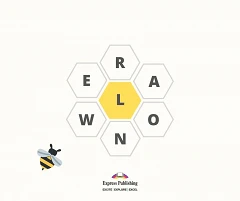Mediation is the act of making content accessible to someone else and it is paramount in language learning as students are tasked to not only master language but to also help others understand complex structures and concepts. Mediation is what language learning is intended to do: facilitate communication and build bridges between people of different standpoints, cultural backgrounds, and linguistic competency.
Mediation exercises can help learners develop their language proficiency, critical thinking skills, and cultural awareness. They also encourage learners to analyze and process information in a thoughtful and accurate manner.
Which activities turn students into mediators? 4Minds, our new coursebook for teenagers and young adults at CEFR levels A1-C1/C2, turns language learning into an opportunity to explore diverse concepts and their potential trhough mediation and other methodolgies that optimise learning and hone life skills.
Read our article and explore the activities!
- Role-Playing Scenarios: Create role-playing activities where students take on different roles in a conversation, such as a customer and a salesperson, a doctor and a patient, or a traveler and a hotel receptionist. This encourages students to mediate and negotiate language use based on the roles they are playing.
- News Discussions: Provide current news articles or videos as conversation starters. Students can mediate the content by summarizing, paraphrasing, and discussing their opinions on the topic using English language skills.
- Debates and Discussions: Organize debates or group discussions on thought-provoking topics. Students can mediate by presenting arguments, counterarguments, and providing evidence while engaging in English conversation.
- Cultural Exchanges: Pair students from different cultural backgrounds and encourage them to share aspects of their cultures with each other. This promotes cross-cultural mediation and language use as they explain traditions, customs, and perspectives in English.
- Problem-Solving Scenarios: Present real-life problems or challenges and have students work together to find solutions. This involves mediation through collaborative conversation and brainstorming in English.
- Descriptive Games: Use games like "20 Questions" or "Guess the Object" where students describe or mediate details of an object without directly naming it. This builds vocabulary, descriptive skills, and indirect communication.
- Interviews: Conduct mock interviews for various scenarios, such as job interviews or celebrity interviews. Students can practice mediating formal language, expressing opinions, and asking questions.
- Storytelling and Story Interpretation: Have students mediate stories, either by retelling them in their own words or interpreting the meanings behind them. This encourages creative language use and critical thinking.
- Comparing and Contrasting: Ask students to compare and contrast different aspects, such as two movies, two cities, or two historical events. This promotes language mediation through analyzing similarities and differences.
- Media Analysis: Provide excerpts from movies, TV shows, or songs. Students can mediate by discussing the themes, messages, and cultural references within the media.
- Collaborative Story Building: Have students collectively build a story, with each student contributing a sentence or paragraph. This encourages mediating between their ideas and creating a coherent narrative.
These practical applications of mediation in ESL conversation practice help young adults and teenagers develop their language skills while engaging in meaningful and interactive language use. They encourage critical thinking, creativity, and effective communication in English.
 (1)-1.png)









